Discover Indiana Dunes State Park
Indiana Dunes State Park features over 2,000 acres of towering sand dunes, beautiful beaches, and miles of trails, including the 3 Dunes Challenge, a one-of-a-kind hike up the park’s three tallest dunes for breathtaking views of Lake Michigan. The park also features an astonishing array of ecosystems, from marshes, to forests, to oak savannas. Informative exhibits in the Nature Center tell the remarkable story of this Indiana treasure.

Park within a Park
The Indiana Dunes State Park has over 3 miles of beach and covers more than 2,000 acres. It is one of the few state parks in the country surrounded by a national park. Just think of it as a park within a park.
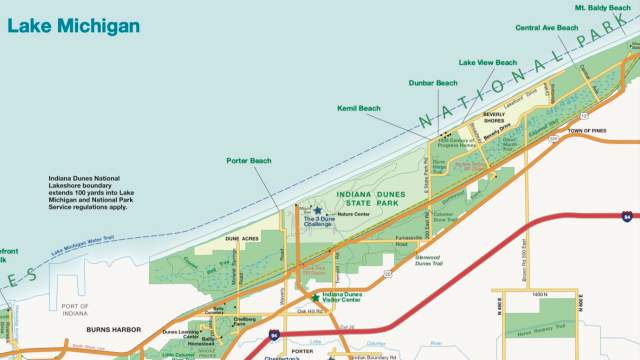
One State Park, Seven Amazing Trails
The Indiana Dunes State Park features seven trails, taking you through an astonishing array of ecosystems and offering breathtaking views of Lake Michigan.
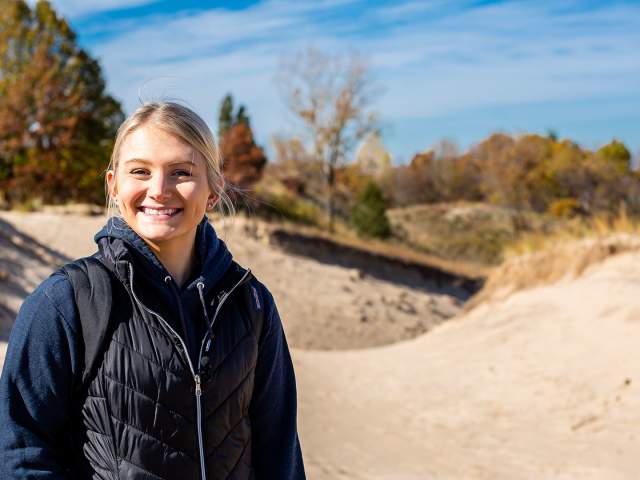
Trail 2 meanders through marshes and wetlands, offering ample opportunities to spot waterfowl, spring wildflowers, and scenic ferns. A portion of the trail is boardwalk.
Trail 3 provides a striking contrast, leading you through the Dunes Prairie Nature Preserve, where prickly pear cactus thrive in the sand.
This loop traverses the three tallest dunes in the state park, making up the famous “3 Dune Challenge.” Complete the hike and you'll get a free sticker for your accomplishment!
Trail 7 is a lovely trail that connects the Nature Center to the beach while avoiding the tall dunes on the 3 Dune Challenge.
Trail 9 weaves through the forest and climbs scenic dune ridges atop two blowouts. It provides some of the best views of the dunes.
This trail follows the majestic shoreline of Lake Michigan and leads through stands of white pines. Watch for the “tree graveyard” in Big Blowout, where the forces of sand and wind have buried…
The Geological Story of Indiana Dunes State Park
The peaceful surroundings of Indiana Dunes State Park make it easy to forget the titanic natural forces that created it. After the glaciers of the last ice age receded, the water that took its place not only formed the Great Lakes, including Lake Michigan, but its waves helped to form the dunes. In the Indiana Dunes State Park, the oldest of these dunes are approximately 4000 years old. The tallest dunes were formed later, some two thousand years ago, when shifting winds piled up the mountains of sand we see today.

Dunes, Forests, Prairies, and Marshes
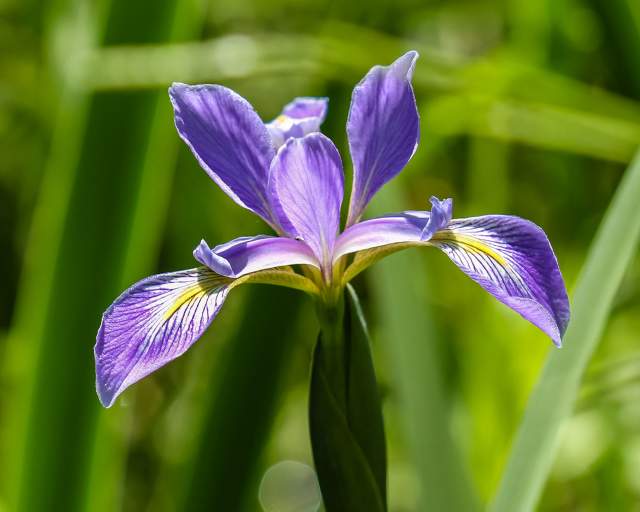
Marvelous Plants of Indiana Dunes State Park
687 different native plant species can be found in the Indiana Dunes State Park. This incredible array includes everything from cinnamon fern, which thrives in the wetlands in the park, to the towering jack pines in the forest, to the goldenrod and black oak trees of the savanna. Thanks to the unique combination of ecosystems the glaciers left behind, you can even spot prickly pear cactus in the park.
While all of these plants are marvelous, the humble marram grass plays a starring role here, as its ability to thrive even while buried in the sand is crucial to stabilizing the dunes and allowing other plant life to take root.
The Indiana Dunes is one of the most biodiverse national parks in the entire country. Over 1,100 flowering plant species and ferns make their homes here. How many flowers can YOU find?
Plants You May See
Don’t just experience the Indiana Dunes; take it home with you. Find your new favorite T-shirt, hoodie, or accessory in our online gift shop. Show off your love for the Indiana Dunes!
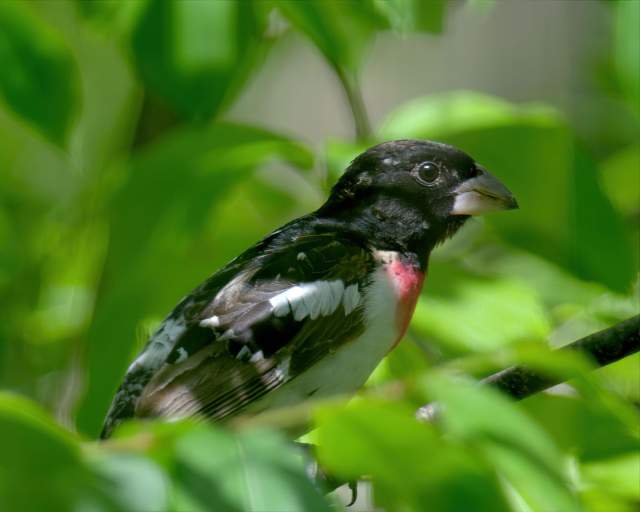
Beautiful Birds of the Indiana Dunes State Park
The hammering of woodpeckers, like the red-headed woodpeckers, often echoes through the trees of the state park. The lovely pine siskin, a finch smaller even than the goldfinch, winters here, and over 350 other species of birds pass through the park on their annual spring migrations thanks to the wind funnel effect on the southern shores of Lake Michigan.
Birds You May See
Observation Tower
Sitting atop a 60-foot sand dune, the Longshore Birding Platform offers a unique vantage point to observe the beautiful birds that call the park home. Be the early bird in the morning to see the most activity as clusters of birds move through the area. The tower is also a great place to view the sunset!
Grab a copy of this self-led birding tour, and visit six of the Indiana Dunes area birding recommended by local birders. Spectacular birds are waiting for you. Can you spot 'em all?
Easy Viewing
The Nature Center has a dedicated Bird Watching Room that provides a great view of the feeding area. Many species of birds frequent this hot spot, from the large and royal-looking Pileated Woodpecker to the tiny Downy Woodpecker. The delicate Ruby-throated Hummingbird makes a common appearance, as do finches, nuthatches, cardinals, bluejays, sparrows, and many more. Those who persevere may be lucky enough to have a rare encounter with a Harris’ Sparrow, Evening Grosbeak, or a Hoary Redpoll.
Visitors can take a rest on the benches and listen to the constant chatter via the connected audio speakers. Reference photos and information sheets are also available to help novice birders identify our feathered friends.
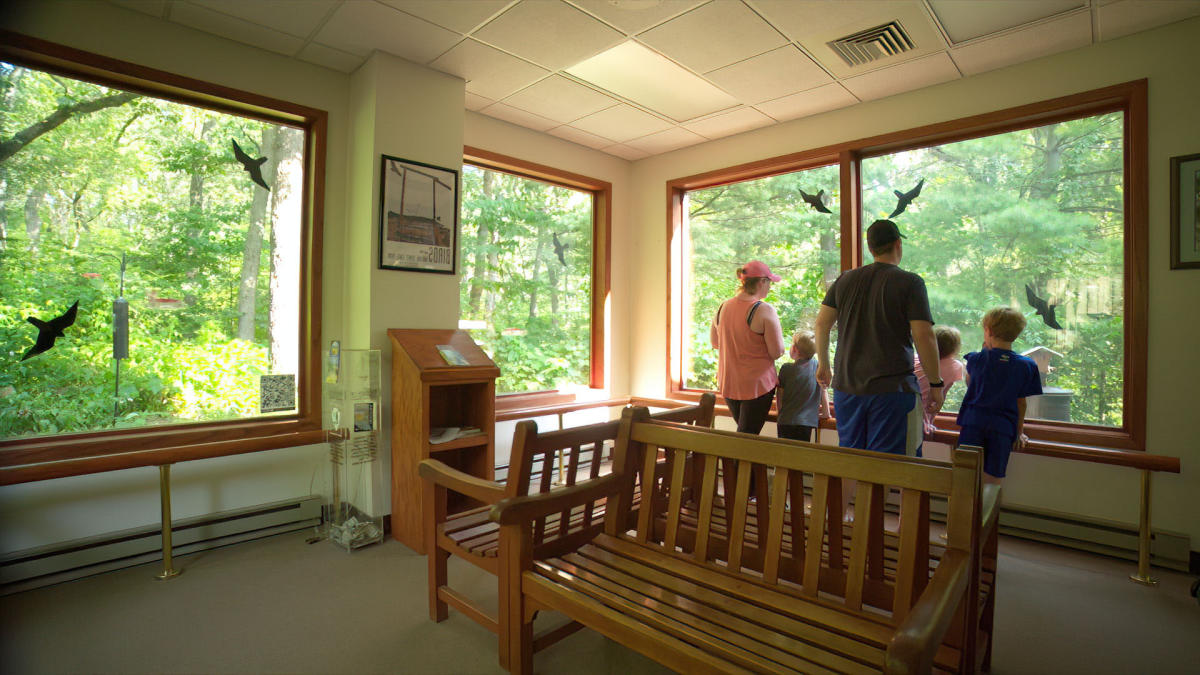
Amazing Insects of the Indiana Dunes State Park
The wildflowers that proliferate in the state park in the spring make the Indiana Dunes a paradise for pollinators, including a number of species of bees and butterflies. Lake Michigan is a formidable natural obstacle on the annual migration of the monarch butterfly, so these majestic insects can often be found along the shoreline in the late summer months. The marshes and wetlands offer an inviting habitat for dragonflies and damselflies.
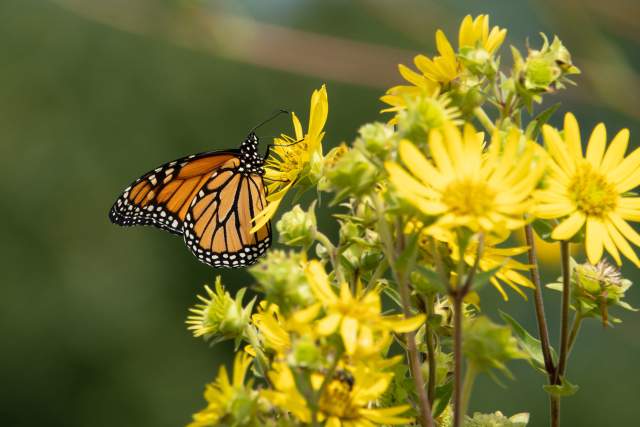

Hidden Hunter
If you look closely on the edges of the sandy trails at Indiana Dunes State Park, you may find a hidden predator commonly known as an Ant Lion.
It cleverly buries itself in the loose sand and carefully constructs a pit where unwitting prey struggle to gain footing and fall victim to this elusive creature.
Rare and Protected
There is a hidden flower within the state park called the Fringed Polygala. This endangered plant only grows on the side of one specific dune, and its location is a well-guarded secret. Please do not go searching for it. It is far off the trail and nearly impossible to find. It’s important that it remains hidden to keep it protected.

Indiana Dunes State Park packs a lot of biodiversity into a small space. The mix of habitats such as dune, prairie, river, swamp, lake, forest, savanna, marsh, and dune and swale provide home or temporary shelter for an incredible array of flora, including Jack Pine and Bearberries normally found further north in Canada as well as prickly pear cactus that flourishes in desert-like conditions, such as those found on Trail 3.
Rare Habitat
One of those habitats is a rare black oak savanna. This unique mix of open prairie grassland dotted with distinctive oak trees is believed to have once covered approximately 50 million acres across the midwest United States. Today, only 30,000 acres remain. A beautiful example of the oak savanna can be found in the Indiana Dunes State Park, and rangers actively maintain this endangered habitat.
Oak savannas require periodic fires to clear out underbrush and limit the growth of trees. For centuries natural occurrences like lightning strikes and fires set by Native American tribes ensured the balance of plant growth. As development increased and policies of fire suppression became common, savannas became overgrown and gradually disappeared. Currently, active management of the savanna calls for periodic prescribed burns and clearings, allowing sunlight to reach the grasses and smaller plants that make the habitat so special. As you walk through the savanna, take a moment to appreciate the oak trees that withstand the occasional fire to provide shade over the waving grasses.

Nature Center
The Nature Center offers interpretive exhibits on the cultural history and the Natural History of the Indiana Dunes State Park, along with a bird feeding area where visitors can look out at one of the nearly 400 species that visit Indiana Dunes, especially as they migrate through here during the spring and fall seasons.
The Nature Center is also home base to programs held throughout the year, including ranger-led hikes.
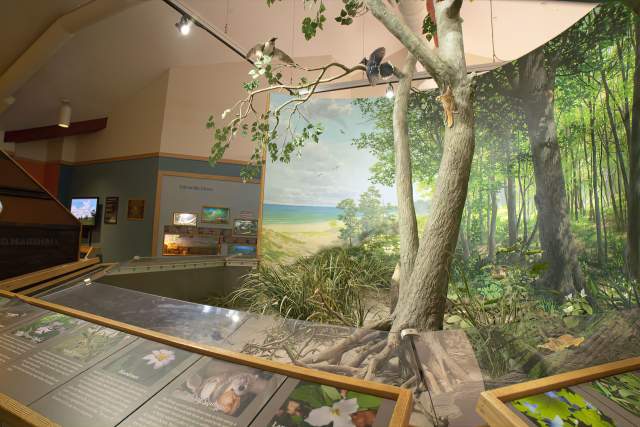
Plan Your Visit
- 1600 N. 25 East
- 219-926-1952
A state park surrounded by a national park, the Indiana Dunes State Park is 2,182 acres of dunes, marshes, swamps, hardwood forests, and white pine groves with a lifeguarded beach (summer…
What to Expect
There are two main parking lots near the beach at the state park. Additional small parking lots can be found near the Nature Center and shelters. On summer weekends with nice weather, all of the lots can fill up. To avoid the crowds, visit on a weekday or in the spring, fall, and winter. Restrooms are available near the Pavilion and the Nature Center.
Be Ready
Poison ivy can grow alongside the trail, and portions can become wet and muddy. Be sure to wear appropriate clothing and footwear. Bring along a reusable water bottle and snacks.
Be Safe
Mosquitoes and ticks can be a nuisance in the summer, so be sure to use Environmental Protection Agency (EPA)-registered insect repellents. Check yourself for ticks after your hike.
Be Responsible
Visitors must stay on designated trails at all times. We have created a video to help you learn about your role in enjoying the dunes area safely while minimizing your impact on the park.
How to Help
We are all responsible for protecting our parks for future generations. The Indiana Dunes, as a whole, is one of he most biodiverse areas in the United States. Here are some tips to help you limit your impact on the natural habitats in the dunes area.
Get Involved
Be the Change — Volunteer! Get more involved with the Indiana Dunes! There are many no-hassle, drop-in volunteer opportunities available for everyone. Just show up!
Love & Protect the Dunes
Love the Dunes? Protect them too! Discover how you can help preserve Indiana Dunes’ natural heritage, biodiversity, and local culture with simple, sustainable actions that make a big impact.




































































